Bright binocular nova discovered in Lupus
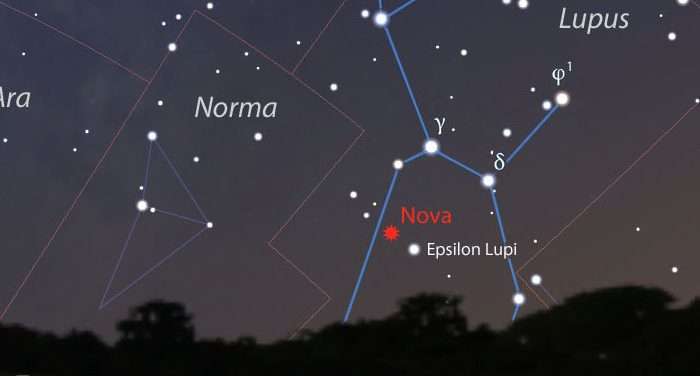
On September 20, a particular spot in the constellation Lupus the Wolf was blank of any stars brighter than 17.5 magnitude. Four nights later, as if by some magic trick, a star bright enough to be seen in binoculars popped into view. While we await official confirmation, the star's spectrum, its tattle-tale rainbow of light, indicates it's a nova, a sun in the throes of a thermonuclear explosion.
The nova, dubbed ASASSN-16kt for now, was discovered during the ongoing All Sky Automated Survey for SuperNovae (ASAS-SN or "Assassin"), using data from the quadruple 14-cm "Cassius" telescope in CTIO, Chile. Krzysztof Stanek and team reported the new star in Astronomical Telegram #9538. By the evening of September 23 local time, the object had risen to magnitude +9.1, and it's currently +6.8. So let's see—that's about an 11-magnitude jump or a 24,000-fold increase in brightness! And it's still on the rise.
The star is located at R.A. 15h 29?, –44° 49.7? in the southern constellation Lupus the Wolf. Even at this low declination, the star would clear the southern horizon from places like Chicago and further south, but in late September Lupus is low in the southwestern sky. To see the nova you'll need a clear horizon in that direction and observe from the far southern U.S. and points south. If you've planned a trip to the Caribbean or Hawaii in the coming weeks, your timing couldn't have been better!
I've drawn the map for Key West, one of southernmost locations on the U.S. mainland, where the nova stands about 7-8° high in late twilight, but you might also see it from southern Texas and the bottom of Arizona if you stand on your tippytoes. Other locales include northern Africa, Finding a good horizon is key. Observers across Central and South America, Africa, India, s. Asia and Australia, where the star is higher up in the western sky at nightfall, are favored.
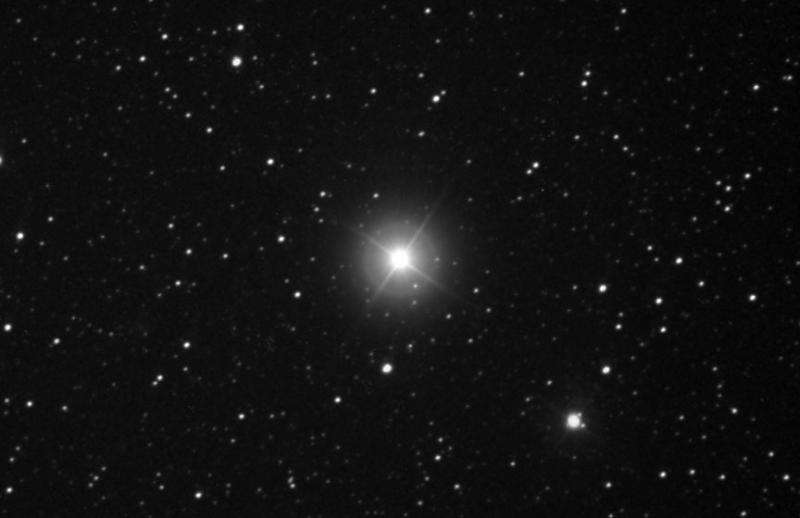
Nova means "new", but a nova isn't a brand new star coming to life but rather an explosion that occurs on the surface of an otherwise faint star no one's taken notice of – until the blast causes it to brighten 50,000 to 100,000 times.
A nova occurs in a close binary star system, where a small but extremely dense and massive (for its size) white dwarf siphons hydrogen gas from its closely-orbiting companion. After whirling around in a flattened accretion disk around the dwarf, the material gets funneled down to the star's 150,000 F° surface where gravity compacts and heats the gas until it detonates in a titanic thermonuclear explosion. Suddenly, a faint star that wasn't on anyone's radar vaults a dozen magnitudes to become a standout "new star".
Novae are relatively rare and almost always found in the plane of the Milky Way, where the stars are most concentrated. The more stars, the greater the chances of finding one in a nova outburst. Roughly a handful a year are discovered, many of those in Scorpius and Sagittarius, in the direction of the galactic bulge.
-
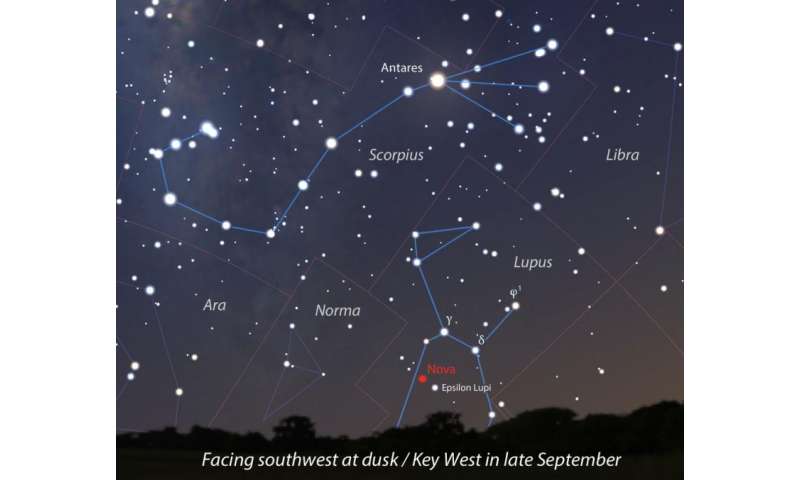
The nova was discovered on Sept. 23 near the 3rd magnitude star Epsilon Lupi. It rose from fainter than magnitude +17.5 to its current magnitude +6.8 in just four nights … and it’s still rising. It’s visible low in the southwestern sky in late evening twilight low northern latitudes, the tropics and southern hemisphere. This map shows the sky facing southwest about an hour after sunset from Key West, Florida, latitude 24.5 degrees north. Credit: Stellarium -
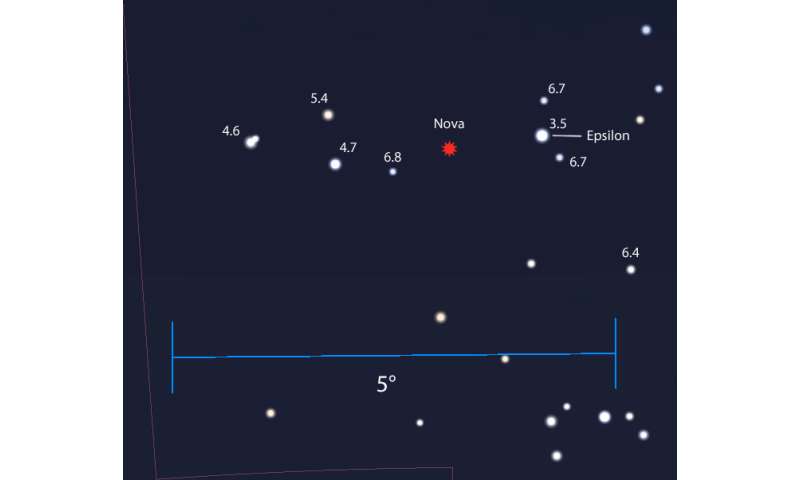
Use this chart with binoculars to help you find the likely nova. The field of view is about 5 degrees with north up. The “new star” lies between a bright triangle of stars to the east and the naked-eye star Epsilon Lupi to the west. Stars are labeled with magnitudes. Credit: Bob King, Source: Stellarium -
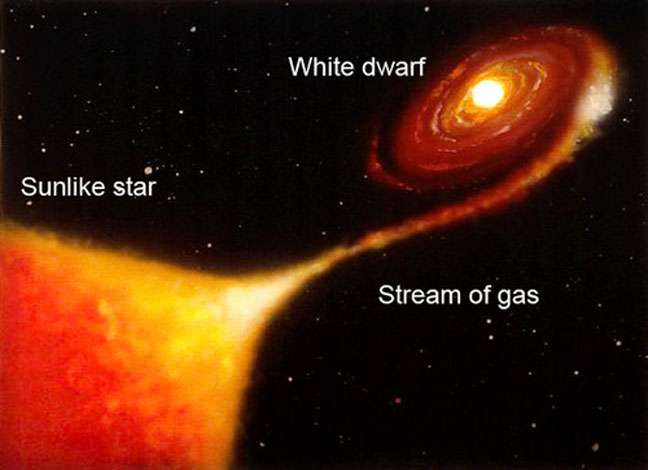
Novae occur in close binary systems where one star is a tiny but extremely compact white dwarf star. The dwarf draws material into a disk around itself, some of which is funneled to the surface and ignites in a nova explosion. Credit: NASA
Source: Universe Today





















